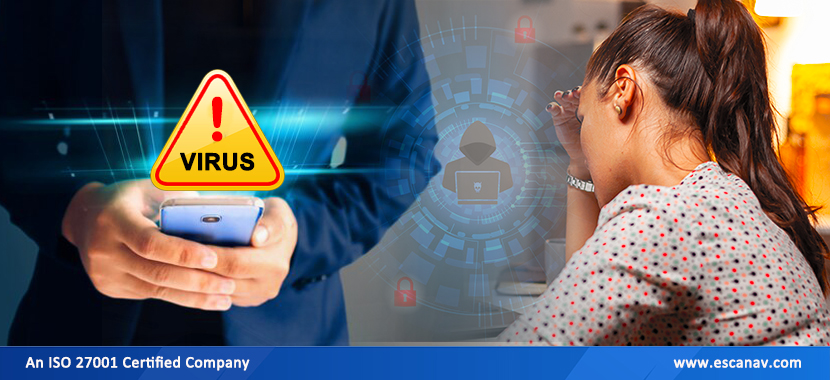Discovering that you have a virus on your computer and haven’t backed up all your valuable files and photos can be upsetting. Your device can be infected by just one wrong click or bad download. The feeling might lead people to believe they will do anything to get their machine online again. Is it possible to tell if your computer is infected before your files are destroyed? Here’s what you can do about them, as it happens.
The Pop-up hell
What to look out for: Whenever you start your computer, you will be met with a barrage of pop-up ads, which indicates that you have a problem. It’s also possible for multiple problems to occur at the same time.
There are some websites that automatically generate pop-ups, but you can block them via the settings on most browsers. The only problem with this is if whenever your browser isn’t open, your computer bombards you with pop-ups.
It is possible that your device has been infected by a type of Adware or Trojan Tracker. Adware makes money by generating unwanted links to sites or opening windows to some pretty unsavory websites. The hacker makes money from advertising when you accidentally click the link.
What to do: Despite being one of the more frustrating forms of infection, it is usually easy to resolve. Using the Uninstall option in your Control Panel, you can easily remove the Adware program if you know its name. Adware is one of the more obvious forms of infection, however, most infections will not appear quite so clearly.
The best solution is to use a good malware removal tool to attack the malware and regain control. As Adware has grown in popularity, anti-Adware software has improved to combat the threat. You will be able to scan your system and delete viruses with this tool.
There is a virus in your account that someone gets into
What to look for: A virus’ main objective is to spread as widely as possible. It is typical for viruses to spread through your email or social media accounts, as they attempt to spread to as many people as possible.
Usually, there will be some indication that this has happened. If you aren’t a weight loss professional, your friends may ask you why you’re posting weight loss advice on social media.
What to do: It is pretty easy to spot a virus that has been sent from a friend’s account. If someone wants to let you know that your account is sending unwelcome emails or postings, they usually send you a mail.
The longer a hacker has access to your account, the more damage they can cause. The initial step is to remove them from the account by changing the password. This will prevent spambots from logging in, so you won’t be bothering your friends with diet pill advice.
A more dangerous scenario is if the account has been hijacked by a real person, in which case they may have changed your password, recovery address, or security questions to lock you out. You’re not in too much trouble if you can reset the password.
For those who cannot reset their passwords, they will have to contact their email provider’s technical support or their social media accounts, which will most likely take a considerable amount of time.
Providers are likely to check your identification and your earliest childhood photographs to ensure you are who you say you are. The latter is a joke, but make sure you have proof of your identity, address, and personal information with you.
Having your bank account hacked is one of the worst scenarios. Hackers are responsible for withdrawing random amounts from your account without your knowledge.
Whenever your bank account is compromised, it’s best to contact customer service or pop into your local branch to have it resolved. It is obvious that you need to take action as soon as possible in order to avoid continuing to make donations to the Thieving Hackers Support Fund.
You are unable to access your computer.
What to look for: This is a pretty clear type of infection. Ransomware typically disables all device controls and displays an ominous screen message purporting to be from an official police or law enforcement agent. Alternatively, less creative attackers will simply lock your screen with a straightforward message demanding money.
This type of ransomware tries to extort money from its victims by freezing their computers and demanding a payment to restore access. This type of virus can instantly attack and encrypt your files, preventing you from accessing them.
What to do: Some ransomware can be removed by booting into Windows Safe Mode and running a virus scanner, or by restoring your computer to a point before it became infected.
If System Restore does not work, you can use anti-virus software to run an offline virus scanner. If all of these options fail, a factory restore may be your best choice.
It is not guaranteed that you will receive your files in one piece. You may be able to easily regain access to your data in some cases, but more serious ransomware will encrypt your files, scrambling them so you cannot read or use them.
At this point, you’ll be kicking yourself for not regularly backing up your computer!
Some victims claim that the attackers released the files after the requested ransom was paid, but this is not recommended.
Malware that causes your device to freeze, crash, or slow down
What to look for: This can be a difficult infection to detect because it can be difficult to distinguish an infection from a simple drop in performance. If your computer is already quite old, it’s probably time to upgrade to something more modern.
If your computer was running at breakneck speeds and tearing through tasks before suddenly experiencing all sorts of performance issues, you may have a virus.
Some viruses can be a significant drain on your computer’s resources, resulting in a significant drop in performance. An infection may cause slow performance, a lag in response time, or frequent crashing or freezing. This is about as funny as it sounds.
What to do: If your computer isn’t too old and you’re pretty sure it has a virus, the next step is to scan it for viruses with a good antivirus programme. Delete any files that have been flagged as suspicious, and scan for signs of infection on a regular basis.
It can be a particularly sneaky type of infection because the hacker may be using a keylogger to record your keystrokes, stealing all of your passwords, PINs, or any other information you type.
The first step is to determine how the hacker gained access.
Finding the access point is not something most of us can do, so seek assistance from a computer expert. It is critical to have up-to-date antivirus software to ensure that all traces of the virus have been removed from your device.
After you’ve secured and scrubbed your machine, you should change all of your passwords. This may result in a large number of forgotten or mistyped passwords in the coming weeks, but at least you’ll be able to relax once everything is secure again.







